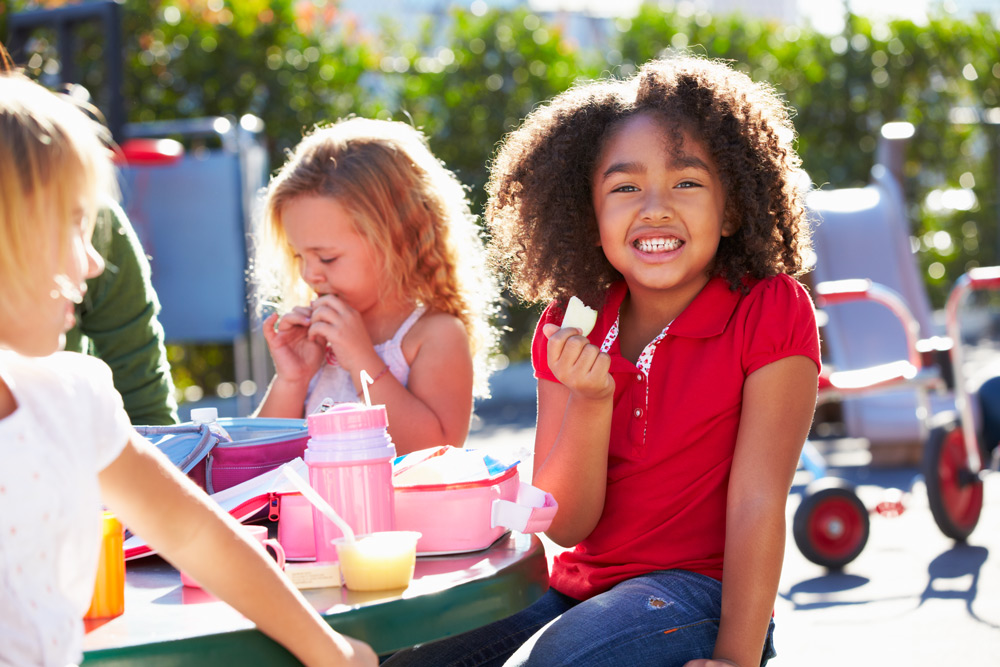Healthy Cold Lunch Hacks for Your Child’s Lunchbox/Bag
As the weather warms up and the school year winds down, many students will be heading out on spring field trips and enjoying lunch on location. A cold lunch doesn’t need to be an unhealthy one — check out these tips for preparing a nutritious cold lunch for your child.
Before you start packing the lunch box:
- It’s important to check with your school to see if they are “nut-free.” Certain items containing nuts might not be allowed in your child’s lunchbox.
- Make sure your lunchbox is clean.
- Try including your child when shopping for their cold lunch. They are more likely to eat foods they helped pick out and prepare.
What food should I pack?
Ideally, there should be at least one item from each main food group present in your child’s lunch box. You should prepare one item from each of the categories below.
- Protein
- Whole grain
- Fruit
- Vegetable
- Dairy
It’s best to avoid serving your child highly processed items like Lunchables or other “filler” foods that contain very little nutrition like chips, veggie straws, pudding, gelatine cups or other dessert snacks. These foods don’t provide the nourishment that will keep your child full for long.
Quick lunchbox/bag ideas:
- Cheese cubes or string cheese
- Hummus and veggies or whole wheat crackers
- Mini bagels with turkey and cheese
- Yogurt with high protein/low fat granola
- Chicken or tuna salad
Packing your lunchbox is equally as important for your health and safety as the food inside of it. It’s critical to keep your perishable food out of the temperature “danger zone” (40-140 degrees Fahrenheit) so it’s safe to eat. Generally, food can remain safe in a lunchbox/bag for up to five hours if properly packed.
For brown bag/disposable lunches, there are limited options for keeping food out of the temperature danger zone. Therefore, it is important to select nonperishable foods.
Nonperishable lunch examples include:
- Dried fruit
- Fruit cup
- Fresh fruit with peels on (clementines, bananas or apples)
- Applesauce pouches
- Yogurt pouches
- Turkey sticks
- Tuna pouches with crackers or a pita pocket
- Protein muffins
- Hummus with fresh veggies or crackers
Packing the lunchbox/bag
- Certain styles of lunch boxes are better suited for keeping your food cold. Look to buy a lunch box/bag with soft sides.
- Use at least two cold sources in a lunchbox/bag that contains perishable food. This could be a gel ice pack and a frozen yogurt or two ice packs, etc.
- One cold source should be at the top of your lunchbox/bag and the other cold source should be at the bottom.
- Don’t overpack your lunchbox/bag. It could be a safety issue by forcing some foods away from cold sources. It’s better to pack smaller portions and this will also help to avoid food waste.
When the field trip is over, make sure you wash out the lunchbox/bag immediately to get rid of any leftover food and leaks/spills. If your child doesn’t typically use their lunchbox/bag it can be easy to forget. There’s nothing worse than discovering old food weeks or months later.
